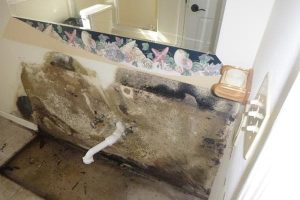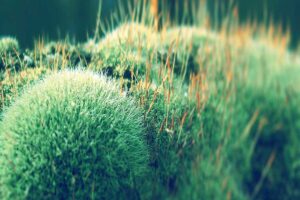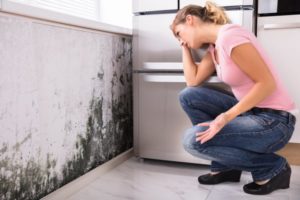Mold Removal
Complete Mold Removal Services
- Mold Inspection
- Air Quality Testing
- Mold Removal
- Mold Remediation
- Mold Containment
- Mold Damage Repair
- Insurance Approved
- 5 Star Rating
Your Local Mold Removal Company
Call Professional Restoration Services For Immediate Response To All Mold Emergencies.
Mold can be very dangerous for anyone with too much exposure to the mycotoxins released by mold spores. Some people may be more allergic than others, especially young children and the elderly. For this reason, it is very important to know the symptoms of mold. PRS is your local mold removal expert in Raleigh NC, Cary NC, and the Research Triangle area. If you discover mold in your home or business, it is very important that you take immediate action. At Professional Restoration Services, our technicians are IICRC 5520 certified. The ANSI/IICRC 5520 is a procedural standard for mold removal and mold remediation of mold-damaged structures and contents.
Mold Damage
Mold causes unpleasant damages over time, in addition to presenting a long list of health risks. Unfortunately, many household cleaners like bleach cause mold to spread. Thus, DIY mold removal is usually ineffective and pointless. When you find mold damage, you need a mold removal company you can trust.
Our highly-trained team of professional mold removal technicians have the ability to source contaminated areas using specialized equipment. We permanently eradicate the mold to prevent further damage to your property and possible health conditions that may arise.
Emergency Mold Removal Services
Common Types of Mold in Homes
- Aspergillus mold is a very common type of fungus typically found indoors and virtually all over the world. Allergic aspergillosis is a condition that occurs when people inhale the microscopic spores of aspergillus, causing an immune response in the body that can include a high fever, asthma attacks, and coughing up blood and mucus.
- Cladosporium is a type of mold often found growing inside homes. While most types of mold prefer warm climates, cladosporium can grow in cool areas, too. It often grows on fabrics, like carpets, and on wood surfaces, like cabinets and floorboards. It can cause a variety of respiratory problems.
- Chaetomium is said to be the third most common type of mold found in damp buildings. It can be found on all sorts of water-damaged building materials, including wallpaper, drywall, window frames, baseboards and carpets. The mold produces an enzyme called cellulase, which breaks down the cellulose in these materials, literally destroying them.
- Ulocladium requires a lot of water, so it frequently grows in areas with extensive water damage, including homes that have been flooded. It’s often found growing on wet walls. Many people are allergic to ulocladium.
- Fusarium is another of the mold types that, like cladosporium, can grow and spread at lower temperatures. It’s often found growing on water-damaged carpeting and other fabrics. It causes allergic reactions, asthma, and respiratory infections. People with compromised immune systems are particularly vulnerable to infections due to fusarium exposure.
- Penicillium is often found growing on materials that have been damaged by water, including carpeting, wallpaper, insulation, and furnishings like mattresses. It’s one of the mold types that spread quickly and easily from one part of the home to another. Exposure to penicillium can cause allergic reactions, chronic sinus infections, and inflammation of the lungs.
- Stachybotrys is often referred to as “black mold” due to its slimy black appearance. It’s sometimes referred to as “toxic mold”. It can cause allergic reactions, breathing problems, chronic sinus infections, asthma attacks, fatigue, and depression. Stachybotrys has a characteristic musty odor and usually grows in places that stay damp all the time, like in air conditioning ducts where there is a lot of condensation or around leaky pipes.
NOT Mold
- Efflorescence are often confused with white mold in basements. Efflorescence is a crystaline, salty deposit that occurs on the surfaces of bricks, concrete and other masonry products. Water from the grounds surface can often be the cause of efflorescence.
The Mold Removal Process
Step 1: Call Our 24-Hour Emergency Hotline
When you find mold in your home or business, call PRS at (919)-467-1991.
Step 2: Inspection
We dispatch a qualified inspector to evaluate the extent and severity of your mold damage. Our expert will document the damages and create a remediation plan.
Step 3: Air Quality Testing
PRS takes periodic air quality tests to monitor conditions in your home as the mold removal process is completed.
Step 4: Mold Removal Cleaning
Our experts clean all areas of visible mold growth, as well as hidden mold growth.
Step 5: Mold Containment Setup
PRS takes proper precautions to safely contain and seal off areas of mold to prevent the spread of spores.
Step 6: Mold Damage Repair
Because mold damage makes a mess, we also complete mold damage repairs to return your property to its glory.
We Work With Your Insurance Company
It’s important that your response to finding mold damage in your home or business doesn’t convey negligence or disregard to prevent your claim from being denied. If insurance can prove that additional property damage was done due to poor property maintenance, your claim may not be covered. Check the Insurance Information Institute for more information about insurance and how to manage your insurance homeowner’s policy.
If you need mold removal services, call us today. PRS works with every insurance company in the area to get your home and life back to normal. Our experienced team coordinates directly with your insurance company to protect the health of you and your family. Professional Restoration Services works on your behalf!

Mold Resources

HELP! I Have Mold In My Bathroom
Unfortunately, mold is not an uncommon find in your bathroom. The high amount of moisture and humidity is often no match for the small bathroom fan. This means that spores can easily take hold. Common spots include in and around the bath tub or shower liner, as well as behind and under the vanity cabinets.

Mold Allergy Symptoms
Signs of Mold Allergy Symptoms Do you believe you have mold in your home? Are you seeing signs of allergies and believe it’s because of mold growth in your home? Being exposed to mold (at work, home, or outdoors) causes the immune system to overreact and can be more harmful to elderly adults, young children

Dangers of Mold After Water Damage
Dangers of Mold After Water Damage After a leak or flood within your home, a common and serious risk that you may face is the presence of mold. In your carpet, your drywall, even in the wooden beams, mold can grow almost anywhere that has adequate moisture. It’s going to look terrible, and smell twice


